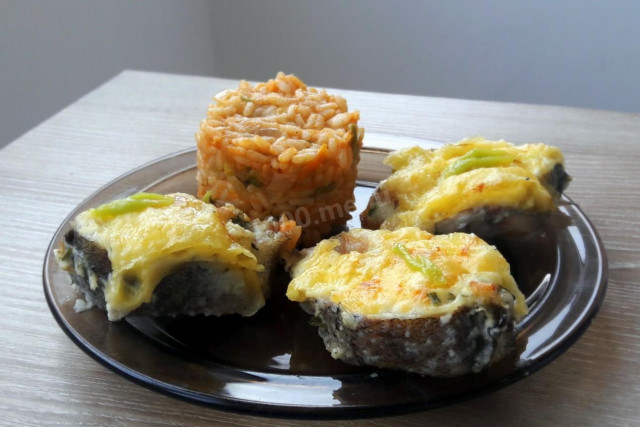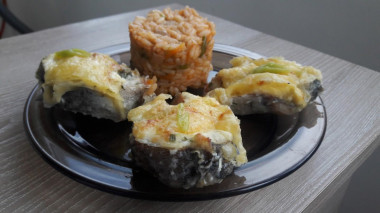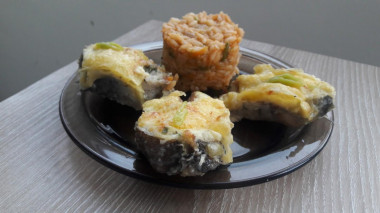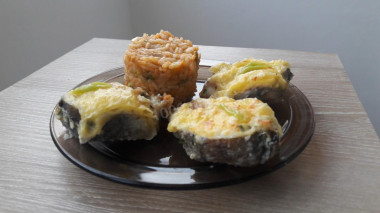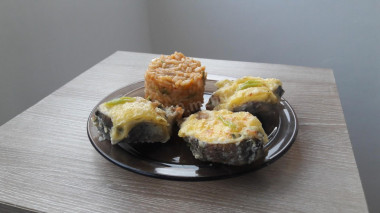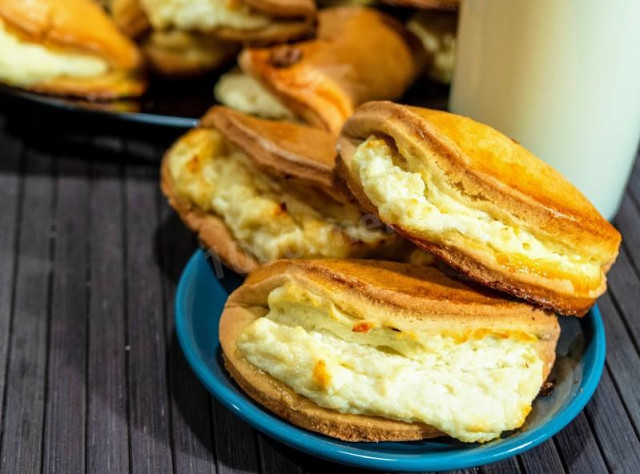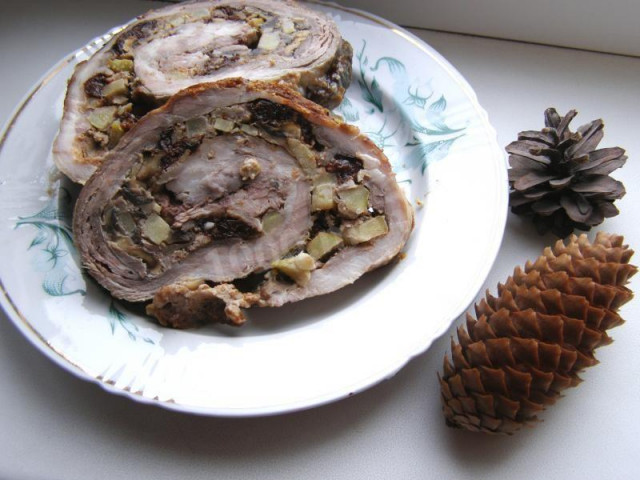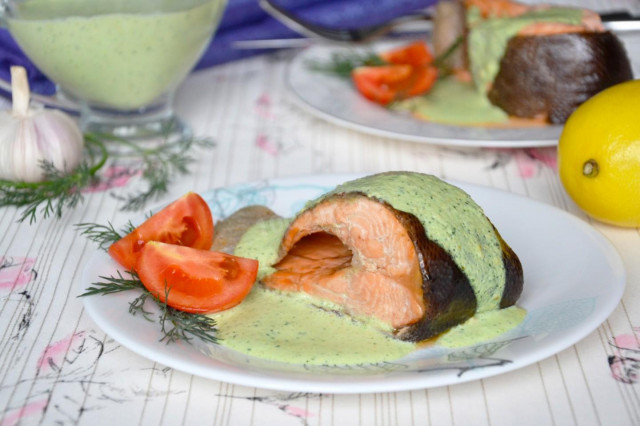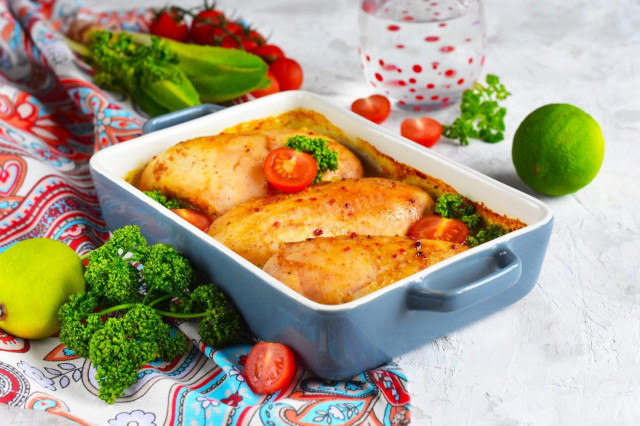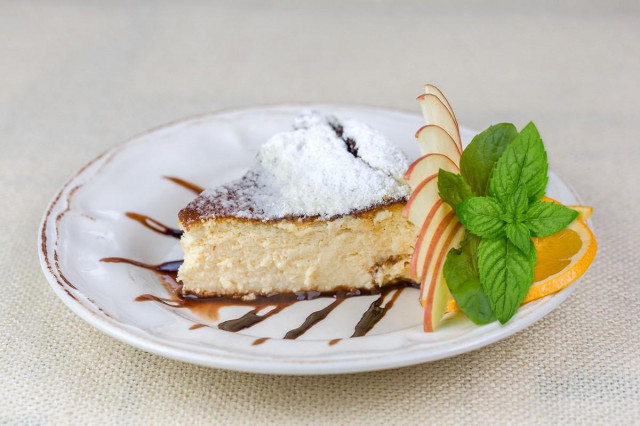Composition / ingredients
Cooking method
Pollock according to this recipe looks appetizing because of the ruddy cheese crust. This dish can be prepared not only as a second for lunch or dinner, but it will also look great on a festive table. According to this recipe, you can cook any white fish.
To cook pollock in cream in the oven, you need to take bigger fish. It is important to choose high-quality fish, not frozen, otherwise it will simply spread out in the cooking process.
Let's start by preparing the fish for baking. We clean and wash pollock well, trim the fins, remove the insides. We dry the fish with paper towels. We cut the carcass into pieces 1-2 cm thick. But you can cut into larger pieces, as you like. Salt and pepper to taste. We leave the fish to soak in salt and pepper for 10-15 minutes.
Who loves fish with spices, you can add any seasoning for fish. I like fish only with pepper, so I don't add anything except it.
Lubricate the baking dish with vegetable oil. I have sunflower, but any other will do. First, we put the fish on a baking dish. Sprinkle with finely chopped dill. With dill, the main thing is not to overdo it, it needs just a little bit.
Then prepare the filling. Mix the cream with a tablespoon of wheat flour, add a little salt. Cream makes pollock more juicy. Pour the resulting sauce over the fish in the form.
Three cheese on a large grater. Sprinkle them with pieces of pollock.
Place the mold in a preheated 200 degree oven. It is better to turn on the oven heating mode both from above and from below. In my electric oven, if you turn it on only from the bottom, the melted cheese browns for a very long time. Bake for 30-35 minutes, and in the process we check, everyone has different ovens.
You can serve pollock with mashed potatoes, rice, vegetables or just bread. If you are preparing for a festive table, I recommend using pollock fillets for convenience.
This fish is delicious to eat both hot and cold. Even the next day it remains delicious and juicy.
Calorie content of the products possible in the composition of the dish
- Buttermilk - 36 kcal/100g
- Cream of 20% fat content - 300 kcal/100g
- Cream of 10% fat content - 120 kcal/100g
- Cream - 300 kcal/100g
- Boiled pollock - 79 kcal/100g
- Fresh pollock - 72 kcal/100g
- Dutch cheese - 352 kcal/100g
- Swiss cheese - 335 kcal/100g
- Russian cheese - 366 kcal/100g
- Kostroma cheese - 345 kcal/100g
- Yaroslavsky cheese - 361 kcal/100g
- Altai cheese 50% fat content - 356 kcal/100g
- Soviet cheese - 400 kcal/100g
- Cheese "steppe" - 362 kcal/100g
- Cheese "uglichsky" - 347 kcal/100g
- Poshekhonsky cheese - 350 kcal/100g
- Lambert cheese - 377 kcal/100g
- Appnzeller cheese with 50% fat content - 400 kcal/100g
- Chester cheese with 50% fat content - 363 kcal/100g
- Edamer cheese with 40% fat content - 340 kcal/100g
- Cheese with mushrooms of 50% fat content - 395 kcal/100g
- Emmental cheese with 45% fat content - 420 kcal/100g
- Gouda cheese with 45% fat content - 356 kcal/100g
- Aiadeus cheese - 364 kcal/100g
- Dom blanc cheese (semi-hard) - 360 kcal/100g
- Lo spalmino cheese - 61 kcal/100g
- Cheese "etorki" (sheep, hard) - 401 kcal/100g
- White cheese - 100 kcal/100g
- Fat yellow cheese - 260 kcal/100g
- Altai cheese - 355 kcal/100g
- Kaunas cheese - 355 kcal/100g
- Latvian cheese - 316 kcal/100g
- Limburger cheese - 327 kcal/100g
- Lithuanian cheese - 250 kcal/100g
- Lake cheese - 350 kcal/100g
- Gruyere cheese - 396 kcal/100g
- Ground black pepper - 255 kcal/100g
- Dill greens - 38 kcal/100g
- Vegetable oil - 873 kcal/100g
- Salt - 0 kcal/100g
- Wheat flour - 325 kcal/100g

